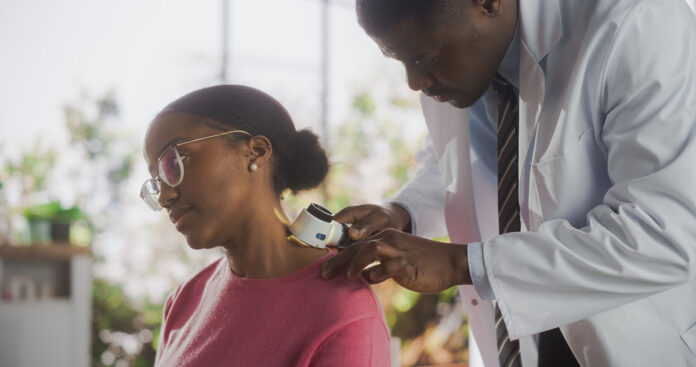While there’s no sure way to prevent melanoma, the deadliest form of skin cancer, you can limit your risk in several ways.
Melanoma is a type of skin cancer that develops when melanocytes, the cells that give the skin its tan or brown color, start to grow out of control. It’s much less common than the two other major types of skin cancer—basal cell carcinoma and squamous cell carcinoma—but much more likely to invade nearby tissue and spread to other parts of the body. Most deaths from skin cancer are caused by melanoma, according to the American Cancer Society.
Melanoma can develop anywhere on your body. They most often develop in areas that have had exposure to the sun, such as your back, legs, arms, and face. Melanomas can also occur in areas that don’t receive much sun exposure, such as the soles of your feet, palms of your hands, and fingernail beds. These hidden melanomas are more common in people with darker skin.
The first melanoma signs and symptoms often are a change in an existing mole or the development of a new pigmented or unusual-looking growth on your skin. Melanoma doesn’t always begin as a mole. It can also occur on otherwise normal-appearing skin.
When melanoma is caught early, it is highly curable. However, as melanoma spreads throughout the body it becomes more difficult to treat. Some people have a higher risk of getting melanoma than others, but it’s important to know that anyone can get melanoma.
Melanoma represents about 5% of all cancer diagnoses in the United States each year, according to the Melanoma Research Alliance. While rates for many cancers are decreasing, new cases of melanoma are rising rapidly, especially among younger people. In fact, cases of melanoma have tripled in the last 30 years.
According to the American Cancer Society, melanoma is more common in men overall, but before age 50 the rates are higher in women than in men. The risk of melanoma increases as people age. The average age of diagnosis is 65.
It’s not always clear what causes melanoma. For example, while most moles never turn into melanoma, some do. Researchers have found some gene changes inside mole cells that may cause them to become melanoma cells. But it’s still not known exactly why some moles become cancerous while most don’t.
There is no sure way to prevent melanoma. Some risk factors such as your age, race, and family history can’t be controlled. But there are things you can do that could lower your risk of getting melanoma and other skin cancers.
Limit your exposure to ultraviolet (UV) rays by wearing sunscreen, seeking shade, and avoiding using tanning beds and sunlamps. You can also check your skin regularly to help you spot any new or abnormal moles or other growths and show them to your doctor before they even have a chance to turn into skin cancer. You can also avoid weakening your immune system, which increases your risk of melanoma and other types of skin cancer.
Learn more here.






